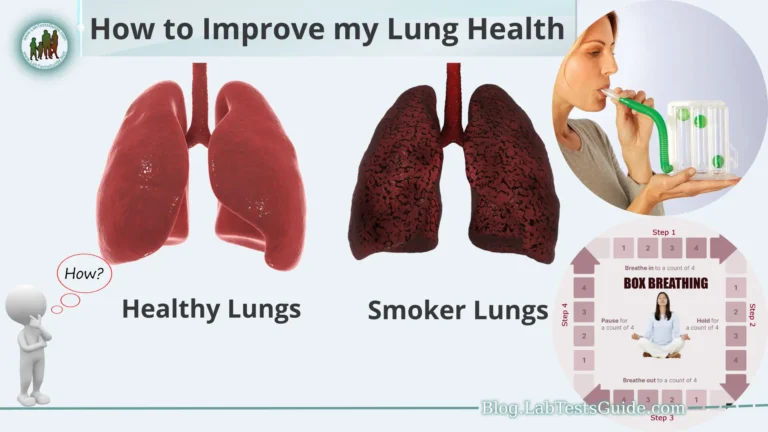The prevalence of high cholesterol and triglyceride levels in children has been on the rise in recent years, primarily due to unhealthy dietary habits and sedentary lifestyles. High levels of cholesterol and triglycerides in childhood can increase the risk of developing cardiovascular diseases later in life. Therefore, it is crucial to focus on prevention and management strategies to promote healthy lipid levels in children.

This guide aims to provide valuable information and practical advice on how to prevent and manage high cholesterol and triglyceride levels in children. It will cover various aspects, including understanding cholesterol and triglycerides in children, risk factors, preventive measures, diagnosis and screening, lifestyle modifications, medications, meal plan suggestions, encouraging healthy habits, and available resources and support.
Understanding Cholesterol and Triglycerides in Children:
Cholesterol and triglycerides are types of lipids (fats) present in the blood. While they are essential for various bodily functions, high levels of cholesterol and triglycerides can pose health risks, especially in children. Understanding the basics of cholesterol and triglycerides can help in effectively preventing and managing their levels in children.
Cholesterol:
- Cholesterol is a waxy, fat-like substance produced by the liver and obtained through certain foods.
- It is important for building cell membranes, producing hormones, and aiding in digestion.
- Cholesterol travels through the bloodstream in lipoproteins, which are composed of fat and protein.
- There are two main types of cholesterol: low-density lipoprotein (LDL) and high-density lipoprotein (HDL).
- LDL cholesterol is often referred to as “bad” cholesterol because high levels can lead to the buildup of plaque in the arteries, increasing the risk of heart disease.
- HDL cholesterol is often referred to as “good” cholesterol because it helps remove LDL cholesterol from the arteries, reducing the risk of heart disease.
Triglycerides:
- Triglycerides are a type of fat that is stored in the body’s fat cells and used for energy.
- They are derived from the fats we consume in our diet and are also produced by the liver.
- High triglyceride levels are associated with an increased risk of heart disease, especially when combined with high LDL cholesterol levels.
Lipid Profile Testing:
- A lipid profile is a blood test that measures cholesterol and triglyceride levels.
- It provides information about total cholesterol, LDL cholesterol, HDL cholesterol, and triglycerides.
- Lipid profile testing is an important tool for diagnosing and monitoring lipid abnormalities in children.
Optimal Levels for Children:
- The ideal cholesterol and triglyceride levels in children vary based on their age, sex, and other factors.
- Generally, desirable levels for children are:
- Total cholesterol: Less than 170 mg/dL (milligrams per deciliter)
- LDL cholesterol: Less than 100 mg/dL
- HDL cholesterol: Greater than 45 mg/dL
- Triglycerides: Less than 100 mg/dL
Understanding the roles of cholesterol and triglycerides in the body and their potential impact on health is the first step towards effectively managing and preventing high levels in children. It is important to consult with healthcare professionals for proper evaluation, diagnosis, and personalized guidance based on individual circumstances.
Risk Factors for High Cholesterol and Triglycerides in Children:
Several factors can contribute to high cholesterol and triglyceride levels in children. Understanding these risk factors is essential for identifying children who may be at a higher risk and implementing preventive measures. The following are common risk factors associated with high cholesterol and triglycerides in children.
- Family History: A family history of high cholesterol or triglycerides increases the likelihood of children developing these conditions. If a parent or close relative has high cholesterol, children may have a genetic predisposition.
- Obesity and Overweight: Excess body weight, especially obesity, is strongly linked to high cholesterol and triglyceride levels. Children who are overweight or obese are more likely to have abnormal lipid profiles.
- Unhealthy Diet: A diet high in saturated fats, trans fats, and cholesterol can raise cholesterol levels in children. Consumption of processed foods, sugary snacks, fast food, and beverages with added sugars can contribute to elevated lipid levels.
- Sedentary Lifestyle: Lack of regular physical activity and excessive screen time can lead to higher cholesterol and triglyceride levels in children. Insufficient exercise reduces the body’s ability to regulate lipid levels and maintain a healthy weight.
- Certain Medical Conditions: Some medical conditions and diseases can be associated with high cholesterol and triglycerides in children. These conditions may include diabetes, hypothyroidism, kidney disease, and certain genetic disorders.
- Medications and Treatments: Certain medications and treatments, such as corticosteroids and some antipsychotic medications, can affect lipid levels in children. It is important to monitor lipid profiles when using these medications.
- Smoking Exposure: Exposure to secondhand smoke or tobacco smoke increases the risk of high cholesterol and triglycerides in children. Smoking damages blood vessels and negatively impacts lipid metabolism.
- Puberty: During puberty, hormonal changes can affect lipid metabolism in children. This period is associated with fluctuations in cholesterol and triglyceride levels, and abnormalities may arise.
Identifying these risk factors can help parents, caregivers, and healthcare professionals take appropriate steps to prevent and manage high cholesterol and triglycerides in children. By addressing these factors through lifestyle modifications, healthy habits, and proper medical guidance, the risk of developing cardiovascular diseases later in life can be significantly reduced.
Preventive Measures:
Preventing high cholesterol and triglyceride levels in children involves adopting a holistic approach that focuses on promoting a healthy lifestyle. The following preventive measures can help in maintaining optimal lipid levels and reducing the risk of cardiovascular diseases.
Healthy Diet for Children:
- Encourage a diet rich in fruits, vegetables, whole grains, and lean proteins.
- Limit the intake of saturated fats, trans fats, and cholesterol found in processed foods, fried foods, fatty meats, and full-fat dairy products.
- Incorporate sources of healthy fats, such as nuts, seeds, avocados, and fatty fish like salmon.
- Promote regular meals and minimize consumption of sugary snacks, desserts, and sugary beverages.
Regular Physical Activity:
- Encourage children to engage in regular physical activity for at least 60 minutes per day.
- Encourage a variety of activities, including aerobic exercises, strength training, and activities that promote flexibility.
- Limit sedentary behaviors, such as excessive screen time (television, computer, video games), and encourage outdoor play and active hobbies.
Maintaining a Healthy Weight:
- Promote a healthy weight for children through a balanced diet and regular physical activity.
- Discourage excessive weight gain and address overweight or obesity through lifestyle changes under the guidance of healthcare professionals.
Limiting Screen Time:
- Set limits on screen time and encourage alternative activities such as reading, hobbies, and outdoor play.
- Create technology-free zones and promote active engagement with family and friends.
Avoiding Tobacco Smoke Exposure:
- Maintain a smoke-free environment for children.
- Avoid exposing children to secondhand smoke or tobacco smoke, as it can negatively affect lipid levels and overall health.
What is Diagnosis and Screening:
Here are key aspects related to diagnosis and screening.
Lipid Profile Testing:
- A lipid profile is a blood test that measures cholesterol and triglyceride levels in the bloodstream.
- The test provides information about total cholesterol, LDL cholesterol, HDL cholesterol, and triglycerides.
- Lipid profile testing is a valuable tool for assessing lipid abnormalities and monitoring response to treatment.
Ideal Age for Testing:
- The American Academy of Pediatrics (AAP) recommends lipid profile testing for all children between the ages of 9 and 11.
- However, screening may be conducted earlier if a child has risk factors, such as obesity, a family history of high cholesterol or heart disease, or certain medical conditions.
- Additional screening may be recommended during adolescence if earlier tests were within the normal range or if risk factors persist.
Normal Ranges for Children:
- The normal ranges for cholesterol and triglycerides in children depend on various factors, including age, sex, and pubertal status.
Generally, desirable lipid levels for children are:
- Total cholesterol: Less than 170 mg/dL
- LDL cholesterol: Less than 100 mg/dL
- HDL cholesterol: Greater than 45 mg/dL
- Triglycerides: Less than 100 mg/dL
Fasting Requirement:
- Fasting is often required before a lipid profile test to obtain accurate triglyceride measurements.
- Typically, fasting for 8 to 12 hours is recommended, but this requirement may vary based on the specific instructions provided by the healthcare provider.
Interpretation and Follow-up:
- The results of the lipid profile test will indicate the child’s cholesterol and triglyceride levels.
- If the results fall within the normal range, routine monitoring may be recommended at regular intervals.
- If the results indicate high cholesterol or triglyceride levels, further evaluation and follow-up will be necessary to determine the appropriate management approach.
It is crucial to consult with healthcare professionals, such as pediatricians or lipid specialists, to determine the appropriate timing for lipid profile testing and to interpret the results accurately. These experts will guide the diagnosis, provide personalized recommendations, and develop a comprehensive plan for managing high cholesterol and triglycerides in children.
How to Manage High Cholesterol and Triglycerides in Children:
Here are key strategies for managing high cholesterol and triglycerides in children.
Lifestyle Modifications:
- Dietary Changes: Encourage a heart-healthy diet that includes plenty of fruits, vegetables, whole grains, and lean proteins.
- Limit saturated fats, trans fats, and cholesterol by reducing the consumption of fried foods, processed snacks, high-fat dairy products, and fatty meats.
- Incorporate foods rich in omega-3 fatty acids, such as fatty fish (e.g., salmon, mackerel), flaxseeds, and walnuts.
- Promote portion control and avoid excessive calorie intake.
- Physical Activity Recommendations: Encourage regular physical activity for at least 60 minutes per day.
- Incorporate a mix of aerobic exercises (e.g., brisk walking, cycling) and muscle-strengthening activities (e.g., push-ups, squats).
- Support participation in organized sports, active hobbies, and family activities.
- Weight Management: If the child is overweight or obese, work with healthcare professionals to develop a weight management plan.
- Focus on gradual, sustainable weight loss through a combination of a healthy diet and increased physical activity.
- Limit Screen Time: Set limits on screen time and encourage children to engage in other activities that promote physical activity and social interaction.
- Encourage outdoor play, reading, hobbies, and creative pursuits.
- Avoid Tobacco Smoke Exposure: Ensure that children are not exposed to secondhand smoke or tobacco smoke, as it can adversely affect lipid levels and overall health.
- Medications for Children: In some cases, lifestyle modifications alone may not be sufficient to manage high cholesterol or triglyceride levels in children.
- If lifestyle changes are ineffective or if the child has certain underlying medical conditions, healthcare professionals may prescribe medications to help manage lipid levels.
- Medications used for managing high cholesterol and triglycerides in children may include statins, bile acid sequestrants, or other lipid-lowering medications.
- The use of medications in children should always be carefully evaluated and monitored by healthcare professionals.
- Regular Monitoring and Follow-up: Regular follow-up appointments with healthcare professionals are essential to monitor lipid levels, assess the effectiveness of interventions, and make adjustments as needed.
- Lipid profile testing should be performed at regular intervals to track changes in cholesterol and triglyceride levels.
- Compliance with lifestyle modifications and medication (if prescribed) should be regularly evaluated and discussed.
Meal Plan Suggestions:
Here are some meal plan suggestions to consider.
Breakfast:
- Whole grain oatmeal topped with fresh berries and a sprinkle of chopped nuts.
- A glass of skim milk or a low-fat yogurt.
- Sliced oranges or a small serving of 100% fruit juice.
Mid-Morning Snack:
- Carrot sticks with hummus or a Greek yogurt dip.
- A small handful of unsalted nuts or seeds.
- Sliced cucumbers with a low-fat yogurt or cottage cheese dip.
Lunch:
- Grilled chicken breast or baked fish (e.g., salmon) served with steamed vegetables (broccoli, carrots, and snap peas).
- Quinoa or brown rice as a side dish.
- A side salad with mixed greens, cherry tomatoes, and a light vinaigrette dressing.
Afternoon Snack:
- Apple slices with natural peanut butter or almond butter.
- Whole grain crackers with low-fat cheese.
- A homemade smoothie made with low-fat yogurt, berries, and a handful of spinach.
Dinner:
- Baked or grilled lean protein options like skinless chicken breast or turkey breast.
- Steamed or roasted vegetables, such as asparagus, Brussels sprouts, or green beans.
- Sweet potatoes or whole wheat pasta as a side dish.
Evening Snack:
- A small bowl of air-popped popcorn.
- Sliced bell peppers or cucumber with a low-fat dip.
- Fresh fruit salad with a sprinkle of chia seeds.
Encouraging Healthy Habits in Children:
Here are some strategies to encourage and foster healthy habits in children.
Setting a Good Example:
- Children are more likely to adopt healthy habits when they see their parents and caregivers practicing them.
- Be a role model by eating nutritious foods, engaging in regular physical activity, and prioritizing self-care.
Making Healthy Eating Fun:
- Involve children in meal planning and preparation. Let them choose fruits, vegetables, and whole grains to include in their meals.
- Make healthy snacks exciting by offering colorful options and cutting fruits and vegetables into fun shapes.
- Experiment with new recipes and flavors to keep meals interesting and enjoyable.
Engaging in Physical Activities as a Family:
- Plan and participate in activities that get the whole family moving, such as biking, hiking, or playing sports together.
- Encourage outdoor play, whether it’s in the backyard, park, or playground.
- Limit sedentary activities, such as excessive screen time, and encourage active play instead.
Promoting Hydration:
- Teach children about the importance of staying hydrated and encourage them to drink water throughout the day.
- Make water easily accessible by providing refillable water bottles and keeping them readily available.
Establishing Regular Meal and Snack Times:
- Set consistent meal and snack times to establish a routine and promote healthy eating habits.
- Avoid skipping meals, especially breakfast, as it provides essential nutrients and sets the tone for the day.
Encouraging Mindful Eating:
- Teach children to eat slowly, paying attention to their body’s hunger and fullness cues.
- Encourage them to savor and enjoy their meals, focusing on the taste, texture, and satisfaction.
Resources and Support:
Resources and Support for Preventing and Managing High Cholesterol and Triglycerides in Children.
Pediatricians and Specialists:
- Consult with your child’s pediatrician or family doctor for guidance, routine check-ups, and personalized recommendations regarding managing cholesterol and triglycerides.
- Seek referrals to pediatric lipid specialists or registered dietitians with expertise in pediatric lipid disorders for more specialized care.
Online Resources and Support Groups:
- American Heart Association (AHA) – The AHA website provides valuable information on heart-healthy lifestyles, including resources specific to children and nutrition guidelines.
- Website: www.heart.org
- Centers for Disease Control and Prevention (CDC) – The CDC offers information on children’s health, including resources related to healthy eating, physical activity, and managing obesity.
- Website: www.cdc.gov/healthyweight/children/index.html
- National Heart, Lung, and Blood Institute (NHLBI) – The NHLBI provides educational materials and resources on heart health, cholesterol, and lifestyle modifications for children.
- Website: www.nhlbi.nih.gov/health-topics/high-blood-cholesterol-in-children-and-adolescents
Education and Counseling Services:
- Registered Dietitians (RDs) – RDs specializing in pediatric nutrition can provide guidance on developing individualized meal plans, addressing dietary concerns, and promoting healthy eating habits.
- School Nutrition Programs – Collaborate with school nutritionists to ensure that your child’s school meals align with healthy eating guidelines.
- Counseling Services – Consider counseling services to address emotional and psychological aspects related to diet, body image, and behavior changes.
Community Programs and Events:
- Local Community Centers – Check with local community centers for programs that promote physical activity, healthy eating, and educational workshops for children and families.
- Health Fairs and Wellness Events – Attend health fairs or wellness events in your community that provide resources, screenings, and educational sessions on heart health and nutrition.
Support from Family and Friends:
- Engage your immediate family members in adopting healthy habits to create a supportive home environment.
- Seek support from friends who are also focused on promoting healthy lifestyles for their children.
- Share experiences and challenges with others facing similar situations, either in person or through online forums or support groups.
FAQs:
At what age should I start monitoring my child’s cholesterol and triglyceride levels?
The American Academy of Pediatrics (AAP) recommends lipid profile testing for all children between the ages of 9 and 11. However, screening may be conducted earlier if a child has risk factors such as obesity, a family history of high cholesterol or heart disease, or certain medical conditions.
Q: Can high cholesterol and triglycerides be managed in children without medication?
In many cases, lifestyle modifications, including a healthy diet, regular physical activity, weight management, and limiting screen time, can effectively manage high cholesterol and triglycerides in children. Medication may be considered if lifestyle changes alone are not sufficient or if there are specific medical indications.
Q: Can children with high cholesterol or triglycerides participate in sports and physical activities?
Yes, children with high cholesterol or triglycerides can and should participate in sports and physical activities. Regular physical activity is beneficial for managing lipid levels and overall cardiovascular health. It is important to consult with healthcare professionals to ensure the activities are appropriate and safe for the child’s condition.
Q: Are there specific foods that can help lower cholesterol and triglycerides in children?
A heart-healthy diet rich in fruits, vegetables, whole grains, lean proteins, and healthy fats can help lower cholesterol and triglycerides in children. Foods like fatty fish (e.g., salmon), nuts, seeds, and high-fiber foods (e.g., oats, beans) have been associated with improving lipid profiles.
Q: How often should my child’s cholesterol and triglyceride levels be monitored?
The frequency of monitoring depends on various factors, including the child’s initial lipid levels, overall health, and response to interventions. In general, regular follow-up appointments are recommended to monitor progress. Healthcare professionals will determine the appropriate frequency for lipid profile testing based on individual circumstances.
Q: Can children with high cholesterol or triglycerides still enjoy occasional treats?
Occasional treats can be included in a healthy diet for children with high cholesterol or triglycerides. However, it is important to limit foods high in saturated fats, trans fats, and added sugars. Moderation and portion control are key, and it’s best to prioritize nutrient-dense foods as the foundation of the diet.
Q: Can genetic factors influence a child’s cholesterol and triglyceride levels?
Yes, genetic factors can play a role in a child’s cholesterol and triglyceride levels. Family history of high cholesterol or triglycerides can increase the risk of these conditions in children. However, lifestyle modifications can still have a positive impact on managing lipid levels, even in cases with a genetic predisposition.
Conclusion:
In conclusion, preventing and managing high cholesterol and triglyceride levels in children is crucial for their overall health and well-being. By adopting a comprehensive approach that incorporates healthy eating habits, regular physical activity, weight management, and regular health check-ups, parents and caregivers can make a significant impact on their children’s long-term health outcomes.
One of the primary steps is to encourage a healthy diet. Promoting the consumption of fruits, vegetables, whole grains, and lean proteins while minimizing processed foods, saturated fats, trans fats, and sugary beverages can help lower cholesterol and triglyceride levels. Teaching children about portion control and the importance of balanced meals can empower them to make healthier food choices throughout their lives.






